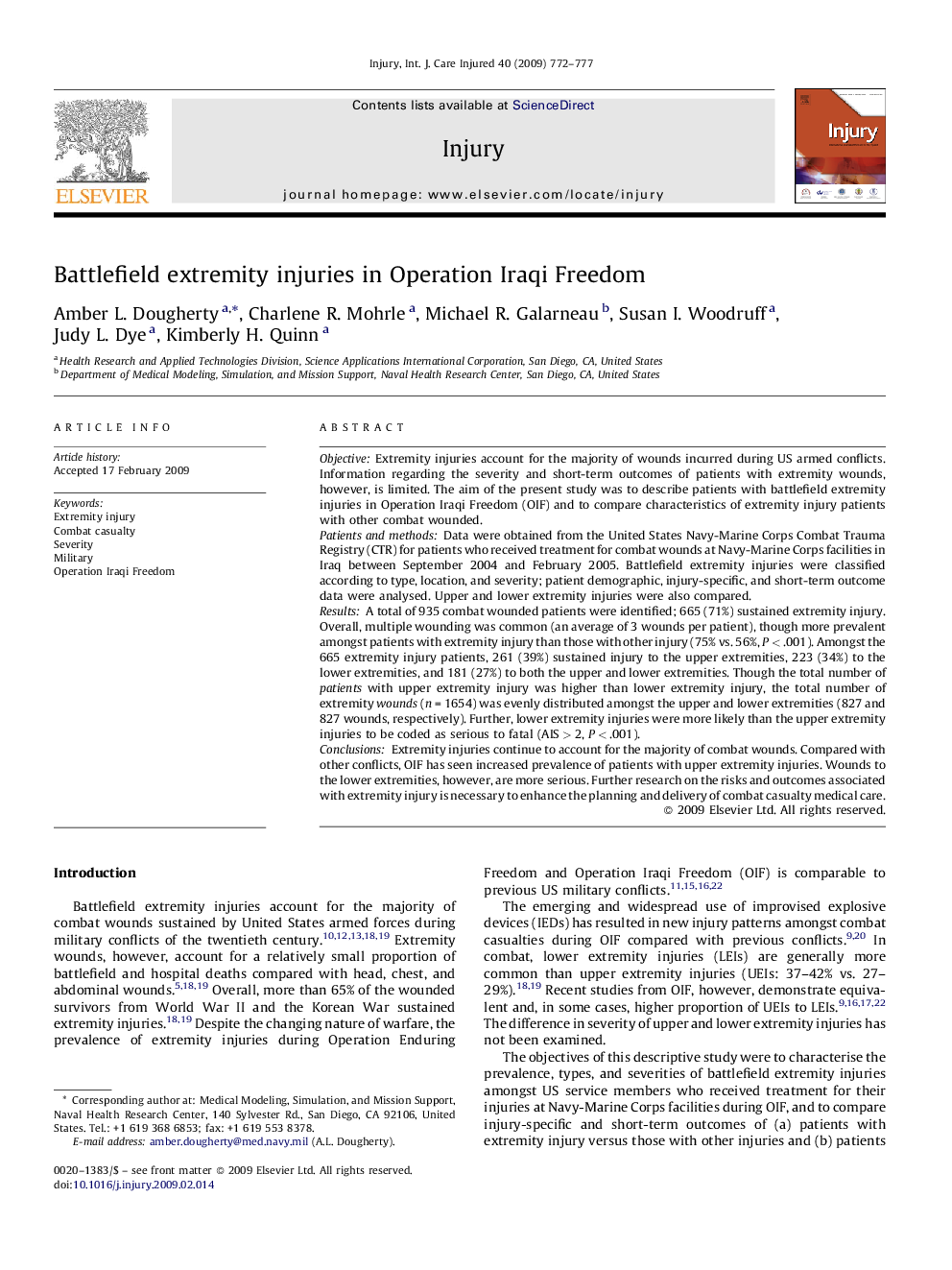| کد مقاله | کد نشریه | سال انتشار | مقاله انگلیسی | نسخه تمام متن |
|---|---|---|---|---|
| 3241591 | 1206082 | 2009 | 6 صفحه PDF | دانلود رایگان |

ObjectiveExtremity injuries account for the majority of wounds incurred during US armed conflicts. Information regarding the severity and short-term outcomes of patients with extremity wounds, however, is limited. The aim of the present study was to describe patients with battlefield extremity injuries in Operation Iraqi Freedom (OIF) and to compare characteristics of extremity injury patients with other combat wounded.Patients and methodsData were obtained from the United States Navy-Marine Corps Combat Trauma Registry (CTR) for patients who received treatment for combat wounds at Navy-Marine Corps facilities in Iraq between September 2004 and February 2005. Battlefield extremity injuries were classified according to type, location, and severity; patient demographic, injury-specific, and short-term outcome data were analysed. Upper and lower extremity injuries were also compared.ResultsA total of 935 combat wounded patients were identified; 665 (71%) sustained extremity injury. Overall, multiple wounding was common (an average of 3 wounds per patient), though more prevalent amongst patients with extremity injury than those with other injury (75% vs. 56%, P < .001). Amongst the 665 extremity injury patients, 261 (39%) sustained injury to the upper extremities, 223 (34%) to the lower extremities, and 181 (27%) to both the upper and lower extremities. Though the total number of patients with upper extremity injury was higher than lower extremity injury, the total number of extremity wounds (n = 1654) was evenly distributed amongst the upper and lower extremities (827 and 827 wounds, respectively). Further, lower extremity injuries were more likely than the upper extremity injuries to be coded as serious to fatal (AIS > 2, P < .001).ConclusionsExtremity injuries continue to account for the majority of combat wounds. Compared with other conflicts, OIF has seen increased prevalence of patients with upper extremity injuries. Wounds to the lower extremities, however, are more serious. Further research on the risks and outcomes associated with extremity injury is necessary to enhance the planning and delivery of combat casualty medical care.
Journal: Injury - Volume 40, Issue 7, July 2009, Pages 772–777